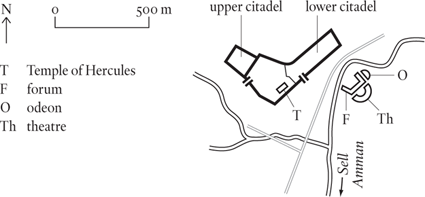
Jordan
Later Philadelphia
The modern capital city of Jordan has traces of settlement as early as the sixth millennium BC. The city’s citadel, now known as Jebel Qal‘a, bears evidence of inhabitants as early as the Neolithic period. The name Amman derives from Ammon, the son of Abraham’s nephew Lot, the purported ancestor of the Ammonites who emerged in the late Bronze Age or early Iron Age. In the ninth century BC, Rabbat Ammon was the capital of a small state that attempted to maintain independence by allying with Syrian cities against Assyrian advances. In the eighth century BC, however, it succumbed to Assyrian control during the conquests of Tiglath-Pileser III.
After Alexander the Great, Amman fell to the Ptolemaic dynasty. Ptolemy II, Philadelphus (285–247 BC), rebuilt the city and modestly named it Philadelphia. It should not be confused with the city of the same name in Lydia and presumably will not be confused with the city in Pennsylvania. Philadelphia passed from the Ptolemies to the Syrian Seleucids and was thereafter subjected to Roman rule after the conquests of Pompey the Great.

Later in the first century BC, Mark Antony transferred Amman as a gift to Cleopatra’s Egypt. After the Battle of Actium, however, it regained a measure of local autonomy in the Roman East. The city became a member of the Decapolis league, the ten-city Greco-Roman federation, and it achieved substantial prosperity as a trading centre when the emperor Trajan annexed the neighbouring (competing) Nabatean kingdom. Amman became an important stop on the Via Nova Traiana. Under Roman rule, Amman acquired the usual architectural adornments of a prosperous city, including a theatre (with seats for around 6,000 people), a five-apsed nymphaeum and a system of colonnaded streets. The citadel displayed a Hercules temple that was either built or restored during the reign of Marcus Aurelius.
In the Byzantine period, Philadelphia was an episcopal see, and the remains of several churches were recorded when the city ruins were studied in the early twentieth century. By the late 1800s, however, Amman had become an abandoned ruin. Its reoccupation began in 1878, when Ottoman authorities sent a small community of Circassians to live there.